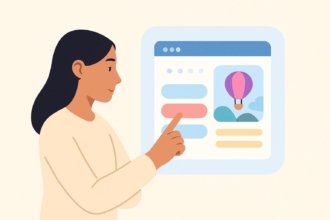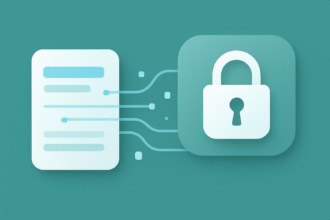If you’ve stepped foot in a clinic, doctor’s office, or hospital in the past few years, you’ve probably encountered a self-service kiosk to take care of anything from checking in for an appointment to updating patient information or paying your copay.
Self-service kiosks in healthcare settings have been around for more than a decade, and their popularity continues to grow. Adoption of this technology in the healthcare sector is increasing, with an expected growth rate of 16 percent over the next decade and beyond.
In this article, we’ll define what self-service kiosks in healthcare are and what they do, discuss the pros and cons of self-service kiosks, and share the benefits of the Jotform Health app with kiosk mode.
The background on self-service kiosks in healthcare
A self-service kiosk in a healthcare setting is an interactive device, usually a terminal with a touchscreen, that allows patients to book or check in for appointments, explore services, process payments and check balances, request prescription renewals, submit insurance forms, and access educational healthcare information, among other healthcare-related functions. Some healthcare kiosks can even perform simple diagnostic tests or enable virtual consults with healthcare providers.
You can find self-service healthcare kiosks in doctor’s offices, hospital lobbies, clinics, pharmacies, and other healthcare facilities.
The pros of self-service kiosks in healthcare
Self-service kiosks offer several benefits in healthcare settings, including the following.
Improved efficiency and reduced wait times
Self-service kiosks eliminate the need for patients to complete time-consuming manual check-ins with a receptionist, simplifying the process and shortening wait times. Patients can also use kiosks to get lab reports, take care of their copay, schedule an appointment, view their medical records, and conduct other related tasks on their own, reducing the need to wait in long lines or spend time in a crowded waiting room.
Enhanced patient experience
Of course, reducing wait times and making other patient tasks quicker and easier creates a better patient experience, which can help foster loyalty to your clinic or practice. And because patients handle their own check-ins, staff can spend more time helping other patients, improving the experience for everyone.
Cost savings
Self-service kiosks minimize the need for staff to take care of time-consuming administrative activities like check-ins, appointment setting, insurance verification, and similar tasks, which can reduce staffing needs. Plus, without the burden of these tasks, staff can focus on more important and complex duties, which leads to a better experience for both patients and staff.
Quicker, easier payment capture
Self-service kiosks can accept multiple payment types, including credit card, debit card, cash, and bank transfer payments.
Reduced paper and printing costs
Since kiosks rely on digital transactions and records, electronic health guides, and other digitally produced materials, healthcare providers can cut paper and printing costs significantly and, in some cases, eliminate them completely.
Enhanced data collection and analysis
Self-service kiosks improve patient data collection by allowing patients to complete medical forms and questionnaires and view their medical data without healthcare staff present. Kiosks also store important patient data and analyze patterns in patient feedback to improve the patient experience. And because there are typically fewer errors with digital data input, patient records are more accurate.
The cons of self-service kiosks in healthcare
While there are many advantages of implementing self-service kiosks in healthcare, there are also a few disadvantages. These include
Technology barriers and accessibility issues
As with almost any digital device, some patients will find it difficult to access the full functionality of kiosks if they’re unfamiliar with the technology or they face language barriers. Other potential tech issues include downtime for maintenance and errors related to touchscreens, software, payment processors, and other tech infrastructure.
Privacy and security concerns
Patients may be concerned about the privacy and security of their protected health information (PHI) within the device itself. They may also worry that people in the lobby or waiting area or those standing close to them in line may be able to see the information they’re entering on the touchscreen. Other privacy and security concerns include the possibility of nefarious actors installing malicious programs or otherwise manipulating the kiosk operating system.
Lack of human interaction
Some patients will always prefer the human touch over using a self-service kiosk. This can be especially true for patients who have a sensitive or complicated health issue. Those patients may not want to engage at all with a practice that doesn’t offer personalized service.
Initial costs and maintenance
Initial setup and maintenance costs for self-service kiosks can also be a challenge, running from as little as $2,000 to as much as $10,000 and beyond for one kiosk, not including the ongoing expense of maintenance, repair, software updates, and other associated costs.
Jotform Health app with kiosk mode: An easy, cost-effective solution
The Jotform Health app is a comprehensive mobile app that helps healthcare providers securely collect and manage a variety of sensitive medical data. The app can consolidate all your patient forms in one place and enables contactless, in-person data collection through QR codes, enhancing patient safety and convenience.
With kiosk mode enabled on the app’s forms, you can also turn any mobile device into a self-service kiosk, creating efficient, streamlined patient intake processes while also protecting patient information.
The kiosk setup process is simple. Healthcare facilities can set up tablets or smartphones as dedicated form stations where patients can securely fill out and submit their information. Kiosk mode ensures data privacy, supports offline data collection, and automatically syncs once an internet connection is available. Jotform’s kiosk mode is ideal for helping improve efficiency and enhance the patient experience.
Additional Jotform resources
You can learn more about what kiosk mode is and how to use it to collect data remotely. Then, check out Jotform’s robust mobile forms that work anywhere and learn how you can use kiosk mode with mobile forms.
If you need healthcare form templates, Jotform offers a collection of 3,500-plus online healthcare form templates that make it easier to register new patients and learn about their medical history. Jotform’s online form builder provides healthcare practitioners with a variety of widgets, applications, and themes to enhance patient engagement and enable better communication between patient and provider.
And finally, healthcare providers require additional security to protect confidential patient information. Jotform Enterprise’s HIPAA solutions* allow you to build online forms that keep sensitive patient information private and protected.
*HIPAA compliance features are available only with Jotform’s Gold and Enterprise plans.
The information in this article is offered for your convenience and is not legal advice. Please consult with your attorney(s) if you have questions about your particular legal situation.
Photo by Arseny Togulev on Unsplash













Send Comment: